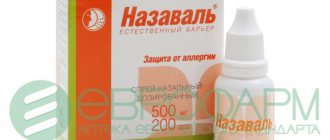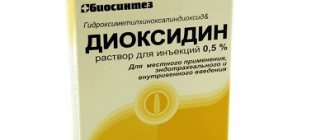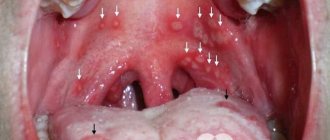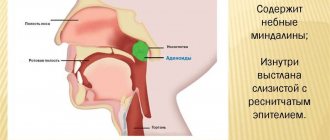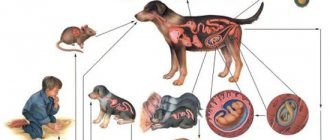Allergies often take a person by surprise, and, of course, the best option to combat it is to consult a specialist. The treatment regimen will necessarily include an antihistamine, which will help reduce unpleasant symptoms. Zyrtec is rightfully considered one of the most popular representatives of this group.
Zyrtec - what is it?
The active substance of Zyrtec is cetirizine, it belongs to the group of piperazine derivatives. Drugs of this family have a powerful blocking effect on histamine receptors, inhibiting the allergic reaction.
The medicine is well absorbed into the general bloodstream from the digestive system and exerts its effects on average within 35-60 minutes after taking the medicine. The period of activity of Zyrtec is at least 24 hours, and complete elimination of cetirizine is observed only after 72 hours.
- Despite this fact, the medicine does not accumulate in the body when taking recommended dosages.
Most of the drug Zyrtec is excreted unchanged in the urine, and only a third of the dose received is excreted through the digestive tract. In addition, cetirizine has virtually no effect on the absorption and effectiveness of other drugs that can be taken in parallel.
So Zyrtec does not inhibit the activity of Warfarin, Azithromycin, Pseudoephedrine, Erythromycin and Ketoconazole.
Important! Zyrtec does not directly interact with alcohol and sedatives, but it is strongly recommended to avoid taking them together.
Indications for use of Zyrtec
zyrtec photo
According to the instructions for the drug, taking Zyrtec is necessary to reduce allergic symptoms from the nasal mucosa and conjunctiva, which are observed with hay fever (allergic rhinitis). In addition, this remedy is indicated in the treatment of chronic idiopathic urticaria.
Some specialists may prescribe this medication as part of the complex treatment of respiratory infections, insect bites, and also for the prevention of post-vaccination reactions, but these situations are not reflected in the official instructions.
Indications for use of Zyrtec
For adults and children from 6 months. and older:
- Treatment of symptoms of year-round and seasonal allergic rhinitis and allergic conjunctivitis with nasal and ophthalmological symptoms (such as itching, sneezing, rhinorrhea, lacrimation, conjunctival hyperemia);
- Quincke's edema.
The use of Zyrtec is indicated for dermatoses that occur with rashes and itching, hay fever, bronchial asthma, allergic nasal congestion, sneezing, and lacrimation. Zyrtec drops are used to treat chronic idiopathic urticaria.
Some pediatricians recommend, in order to avoid the development of allergic reactions, taking Zyrtec drops or tablets for children before scheduled vaccinations (in the absence of contraindications).
Composition and release forms of the drug
Film-coated tablets for oral administration;
Drops for oral administration.
Zyrtec is not available in ointment form for external use.
Zyrtec tablets are usually called simply tablets, and drops are called syrup, solution or suspension.
Both Zyrtec drops and tablets contain cetirizine as an active ingredient. Cetirizine is contained in a dosage of 10 mg per tablet and 10 mg per 1 ml drops.
Tablets contain the following substances as auxiliary components:
- Microcrystalline cellulose;
- Lactose monohydrate;
- Colloidal silicon dioxide;
- Magnesium stearate;
- Opadry Y-1-7000 (hypromellose, titanium dioxide, macrogol).
- Glycerol;
- Propylene glycol;
- Sodium saccharinate;
- Methylparabenzene;
- Propylparabenzene;
- Sodium acetate;
- Glacial acetic acid;
- Purified distilled and deionized water.
Zyrtec comes in two different forms:
Drops that are taken orally. This is a clear solution with a slight odor of acetic acid. This liquid is colorless and is bottled in dark glass bottles of 10 ml and 20 ml. The bottles are closed with a special dropper cap, which has a picture showing the correct way to open the bottle.
Tablets that have a film coating. They are characterized by a white color and an oblong shape that is convex on both sides. One blister can contain either 7 or 10 tablets, and one cardboard box can contain 1 or 2 blisters.
| Form | Active substance | Additional Ingredients | Age from which use is permitted | Price |
| Drops | Cetirizine 10 mg/1 ml | Glycerol, sodium acetate, purified water, glacial acetic acid, sodium saccharinate, methylparabenzene, propylene glycol | 6 months | From 300 rub. |
| Pills | Cetirizine dihydrochloride 10 mg/1 tablet | Microcrystalline cellulose, lactose monohydrate, colloidal silicon dioxide, magnesium stearate, hypromellose, titanium dioxide, macrogol | 6 years | From 400 rub. |
Zytrek in tablet form
Instructions for use of Zyrtec, dosage
The dosage of the drug is individual and calculated taking into account the age, weight, course of the pathology, stage of the disease and the individual characteristics of each patient.
Zyrtec drops
Take strictly internally (do not try to drip into your nose or anywhere else!)
Can be washed down or diluted with water. Eating does not affect the absorption of the medicine, but reduces the rate of absorption.
Children over 2 years of age are prescribed 5 drops of Zyrtec twice a day (the daily dose of cetirizine is 5 mg).
Patients over 6 years of age are prescribed 10 drops of Zyrtec twice a day (the daily dose of cetirizine is 10 mg).
Patients over 12 years of age are usually prescribed an adult dose of Zyrtec - 20 drops per day at a time (the daily dose of cetirizine is 10 mg).
Zyrtec tablets
Adults and children over 6 years of age are prescribed a dose of 10 mg (1 tablet/day). Adults – 10 mg 1 time/day; children - 5 mg 2 times / day or 10 mg 1 time / day. Sometimes an initial dose of 5 mg may be sufficient to achieve a therapeutic effect.
Features of application
The tablet form is prescribed to children from 6 years of age. For the treatment of patients aged six months to 6 years, only Zyrtec solution drops are used.
When using Zyrtec, you should not drive or operate mechanical devices that require increased concentration. Sometimes migraine-like headaches appear.
During Zirden therapy, drinking alcohol is undesirable, as it often provokes allergic reactions.
special instructions
The simultaneous use of alcohol and an antiallergic drug did not show any undesirable interaction. At the same time, in order to avoid disorders of the central nervous system, drinking alcohol with medications is undesirable. Zyrtec does not affect the ability to control mechanisms, but doctors advise not to engage in hazardous activities that require high concentration of attention during the period of treatment of allergic manifestations with this drug.
- CRP in the blood - what is it in a biochemical analysis
- Bitterness in the mouth
- Signs of HIV in women
Side effects and contraindications of Zyrtec
It is necessary to take into account that when using cetirizine, some side factors may occur:
- severe itching, urticaria and redness (hyperemia) of the skin, the development of severe angioedema and other allergic reactions;
- when using Zyrtec, loss of attention, drowsiness and absent-mindedness of the patient may occur;
- some parents note that children, after taking allergy pills or drops, become restless, disoriented, whiny, quickly get tired, and lose interest in their surroundings;
- Digestive disorders often occur, manifested by dry mouth, nausea, vomiting, sometimes constipation or, conversely, loose stools.
Overdose
When taking Zyrtec once in a dose of more than 50 mg, the following symptoms may be observed: drowsiness, restlessness, anxiety, increased irritability, dehydration (urinary retention, dry mouth), constipation, mydriasis, tachycardia.
Treatment: discontinuation of the drug, gastric lavage, administration of activated carbon and other effective sorbents, symptomatic therapy.
Contraindications
Zyrtec should not be prescribed to children and adult patients who have hypersensitivity to hydroxyzine and the auxiliary components of the drug, both drops and tablets.
During pregnancy, the use of the drug is not recommended, since its components penetrate the placental barrier. If a woman is breastfeeding, then it is better to avoid breastfeeding while using Zyrtec.
The drug is contraindicated in patients with severe renal impairment and creatinine clearance less than 10 ml/min.
Zyrtec should be prescribed with extreme caution to elderly people (possibly decreased glomerular filtration rate) and to children under 1 year of age.
Tablets are not prescribed to children under six years of age.
For the use of drops, additional contraindications are considered to be the age of a child under 6 months.
Contraindications:
- end-stage renal failure (CC < 10 ml/min);
- pregnancy;
- lactation period (breastfeeding);
- hereditary galactose intolerance, lactase deficiency or glucose-galactose malabsorption syndrome;
- children up to 6 months (for drops);
- hypersensitivity to the components of the drug;
- hypersensitivity to hydroxyzine.
The drug should be prescribed with caution in chronic renal failure (dosage regimen adjustment is required), in chronic liver diseases, in elderly patients (due to a possible decrease in glomerular filtration).
Analogs of Zyrtec, list of drugs
- Parlazin;
- Cetirizine Hexal;
- Claritin;
- Ketotifen;
- Erius (Desloratadine);
- Zodak;
- Cetirinax;
- Cetirizine;
- Cetrin.
Important - instructions for use of Zyrtec, price and reviews do not apply to analogues and cannot be used as a guide to the use of drugs of similar composition or action. All therapeutic prescriptions must be made by a doctor. When replacing Zyrtec with an analogue, it is important to consult a specialist; you may need to change the course of therapy, dosages, etc. Do not self-medicate! Antihistamine Zyrtec, like similar dosage forms, should be prescribed by the attending physician: an allergist, pediatrician, therapist, dermatologist.
Price for Zyrtec drops
The drug has an antiallergic effect, helping to eliminate most symptoms. Before using the product, you should carefully study the instructions with information about indications, contraindications and method of use. Important information includes side effects. In therapeutic doses, the antiallergic drug does not have a sedative effect and does not cause drowsiness. At the same time, the components of the product impair digestion or contribute to the appearance of skin reactions.
Zyrtec is available in the form of drops for oral administration. The drug is a clear, colorless solution and has a faint odor of acetic acid with a bitter taste. The drops are placed in a dark glass bottle with a capacity of 10 ml. In addition to it, the cardboard box contains a dropper cap and instructions for use. The components of Zyrtec per 1 ml of product are shown in the table.
| Name | Content, mg |
| Active substances: | |
| cetirizine hydrochloride | 10 |
| Excipients: | |
| glycerol | 250 |
| propylene glycol | 350 |
| sodium saccharinate | 10 |
| methylparabenzene | 1.35 |
| propylparabenzene | 0.15 |
| sodium acetate | 10 |
| glacial acetic acid | 0.53 |
| distilled water | up to 1 ml |
The antiallergic drug Zyrtec belongs to the group of selective antagonists of peripheral histamine receptors. After a course of cetirizine, no effect on brain H1 receptors was detected. The product helps eliminate the symptoms of allergic diseases, thanks to its antipruritic and antiexudative effect. At the same time, the drug has almost no anticholinergic, antiserotonin effect.
The effect of taking the drug is observed after 20 minutes of a single dose of 10 mg or 20 drops. The maximum concentration of cetirizine is reached after 60 minutes, after which the effect of the drug is observed for 24 hours. Zyrtec is quickly and completely absorbed from the gastrointestinal tract (gastrointestinal tract). Concomitant food intake does not affect the absorption of the active substance.
Zyrtec has an antiallergic effect, so doctors prescribe the drug to treat allergy symptoms such as itchy skin, watery eyes, and sneezing. Direct indications for taking the medicine are also: rhinorrhea, conjunctival hyperemia, swelling, irritation and skin rashes. This antihistamine is prescribed for the following diseases:
- Quincke's edema;
- hay fever (hay fever);
- seasonal allergies – allergic rhinitis, allergic conjunctivitis;
- hives;
- bronchial asthma;
- allergic dermatitis.
You can buy Zyrtec at any pharmacy in the city or order it in an online store, where you can read reviews about the drug and choose a product that suits the price. You can find out about the cost of drops, which depends on the manufacturer, from the table below.
| Manufacturer | Release form | Dosage, ml | Price, rubles |
| YUSB Farshim S.A., Belgium | drops | 10 | 317 |
| USB Pharma Logistics, Italy | drops | 10 | 346 |
| USB Pharma S.p.A., Italy | drops | 10 | 323 |
| Eisica Pharmaceuticals S.r.l., Italy | drops | 10 | 319 |
| Pathological condition | Positive effect |
| Various skin lesions (atopic dermatitis, urticaria, diathesis, eczema, etc.) |
|
| Cough, otitis media, runny nose, laryngitis |
|
| Adenoids |
|
| ARVI, chickenpox, other infectious diseases |
|
| Insect bites |
|
| Asthma |
|
| Prevention |
|
Reviews of the use of Zyrtec for children and adults in 90% of cases are positive, since the drug effectively and quickly relieves allergies, and also relieves swelling and itching in other diseases, for example, sore throat, dermatitis, etc. In reviews, people indicate that the drug acts quickly and requires little to treat.
Negative reviews about Zyrtec are caused by excessive expectations and hopes for its effect. People, when purchasing the rather expensive Zyrtec, think that it will forever relieve them or their children from allergies, which is naturally not true, since the drug only relieves symptoms. And if the allergen appears again, the allergic reaction will begin again.
Currently, a bottle of Zyrtec drops in different pharmacies costs 332–444 rubles, and a package of 7 tablets costs 208–248 rubles.
| Find out the price |
| Find out the price |
| Find out the price |
| Find out the price |
Average online price* RUR 327
Composition and release forms of the drug
The main component of any form of medication, which provides it with an antiallergic effect, is represented by cetirizine in the form of dihydrochloride. One milliliter of drops contains 10 mg of this compound. The same amount of cetirizine is in one tablet.
Auxiliary components of the liquid form are acetic acid, purified water and glycerol. They are contained in the drops with propylene glycol, methylparabenzene, propylparabenzene, saccharinate and Na acetate.
Inside the tablets, cetirizine is combined with colloidal silicon dioxide, lactose monohydrate, microcrystalline cellulose and magnesium stearate. The shell of this form of the drug is made from macrogol 400, hypromellose and titanium dioxide.
Main active ingredient: cetirizine dihydrochloride 10 mg/ml.
Excipients: sodium acetate, water, glycerol, glacial acetic acid, methylparabenzene, propylene glycol, propylparabenzene, sodium saccharinate.
Transparent liquid, colorless, smells of acetic acid (see composition). A modern antiallergic drug, a metabolite of hydroxyzine, is part of the group of competitive histamine antagonists and blocks H1-histamine receptors.
If you do not exceed the dosage, it does not have a sedative effect. Completely adsorbed from the gastrointestinal tract. The maximum concentration in the blood is reached after 30-60 minutes. Within 10 hours, half of the medication taken is excreted through the kidneys.
Side effects
Occurs in less than 5% of cases; with long-term use, side effects go away on their own. The following complications are possible:
- Allergic reaction to the drug or its components: hyperemia, itching, swelling, vascular damage, photophobia
- Damage to the central nervous system: drowsiness, increased fatigue, migraine or tension headache, dizziness, inability to concentrate
- Digestive problems: constipation or diarrhea, pain during bowel movements, nausea
Complaints of headaches are observed more often; in general, the drug is well tolerated.


